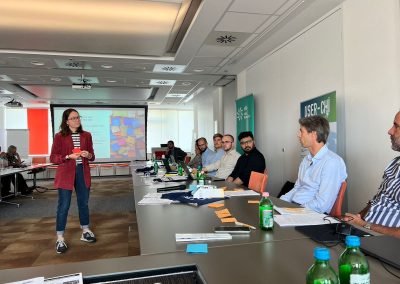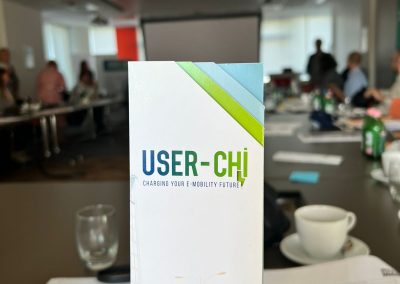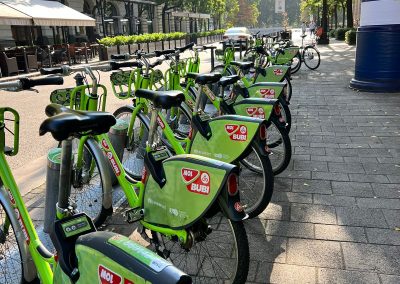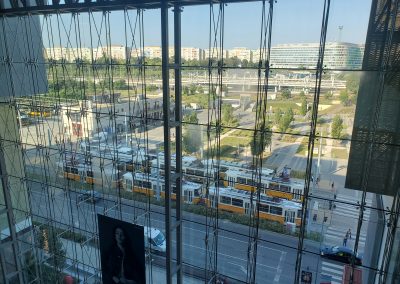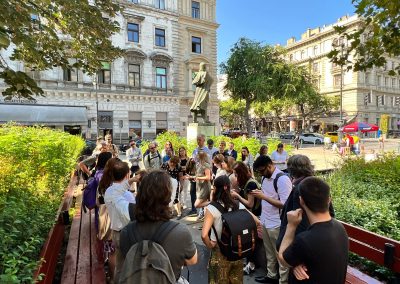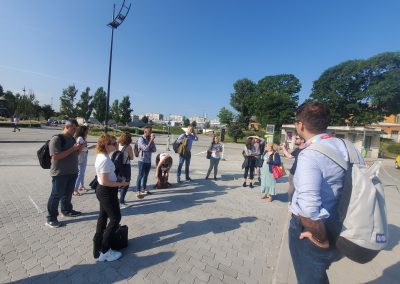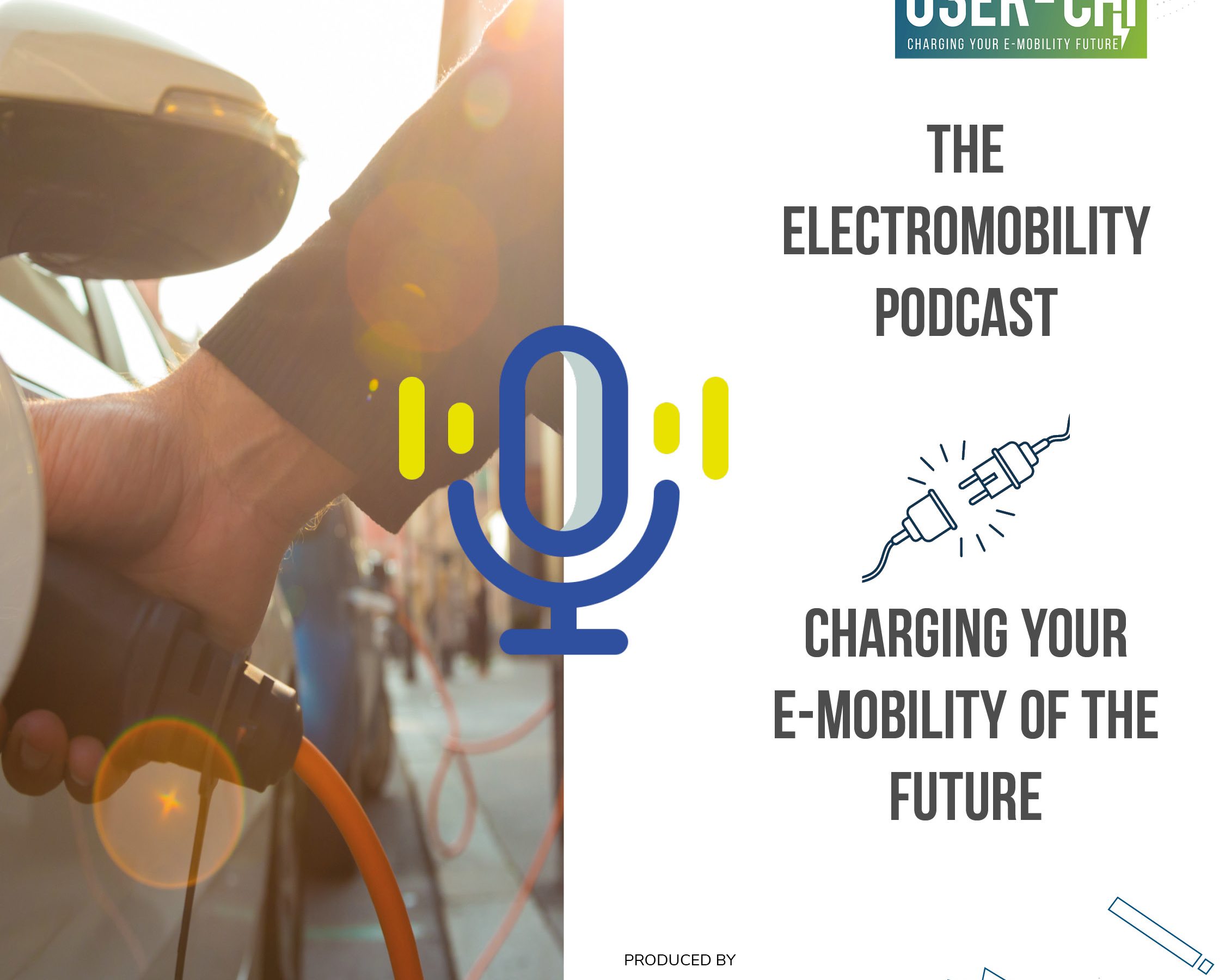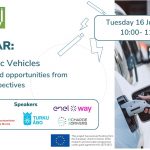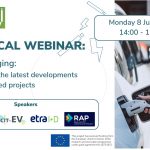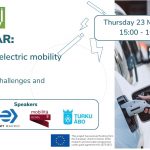Urban and Electric Mobility: Lessons from Budapest’s peer-learning visit
In today’s rapidly urbanizing world, cities are facing numerous challenges when it comes to sustainable transportation and urban planning. Many cities in Central-Eastern Europe are struggling to implement sustainable mobility solutions in a complex political and administrative environment. How to deal with conservative national governments? How to tackle the scarcity of funds?
Walking the streets of Budapest, it is impossible to know the complex political and financial situation the city is currently facing, but 30 participants from different cities in Europe took a closer look at the Hungarian capital challenges during USER-CHI peer-learning visit in Budapest on 25 and 26 September.
Political landscapes and lack of funds challenging EV adoption
Representatives from Barcelona, Budapest, Berlin, Florence, Murcia, Karditsa, Venice and Graz as well as other European project partners shared their challenges and expectations from the visit on the very first day. The hosts from Budapest touched upon the political dimension of implementing sustainable urban mobility projects – as an opposition-led city, their views often clash with those of the national government. This divide leads to funding shortages and other difficulties in implementing sustainable transportation solutions – for example, due to the extra taxes imposed on the city, Budapest is a net contributor to the Hungarian tax system.
Other city representatives in the room shared similar experiences. For example, Berlin faced challenges in increasing EV adoption and expanding charging infrastructure after changes in the city government. Graz, on the other hand, recently experienced a political shift from a conservative, car-centric government to a leadership in favour of sustainable mobility policies. However, due to previous overspendings, the current city budget for their implementation is very limited, which is slowing down the progress.
Apart from the changing political landscape, several other key topics emerged during the initial discussions. Among those were problems with air quality, electrification of bus fleets and a shift from car-dominated traffic to more sustainable multi-modal transportation.
Sharing visions
Despite the aforementioned challenges, the follower cities around the table came to Budapest with a vision to share and an eagerness to discuss and learn from their peers. Karditsa, Greece, brought to the table not only their vision of becoming a Greek city of cycling and their efforts to electrify cargo transfers and create mobility hubs but also the need to address energy poverty in vulnerable areas and the availability and distribution of chargers. Representatives from Graz and Venice shared the challenge of severe air pollution problems. Venice is striving towards substituting conventional buses with electric and hydrogen fleets; however, the electrification of the famous “vaporettos” (waterbuses) is still a challenge unfaced. Graz is also transitioning from diesel to electric and hybrid buses. Furthermore, they outlined their strategy for reducing car traffic and increasing pedestrian, cyclist, and public transportation usage.
Learning from Budapest
The hosts from Budapest provided a deep dive into their city’s vision, strategies and challenges faced when striving for climate neutrality. As one of the cities of the “100 Climate-neutral and Smart Cities Mission”, Budapest has an ambitious goal of becoming climate-neutral by 2030 ahead of itself. After buildings, transportation is the 2nd largest source of pollution in the city and despite Budapest’s significant progress in electric mobility with over 700 public charging points available in the city, the sufficient adoption rate of EVs is still a challenge.
However, Budapest’s approach to electrifying mobility goes beyond vehicles; they are exploring the concept of Mobility Points and Stations. These stations are designed to be more than just transportation hubs; they encompass parcel delivery, bike repair, public green spaces, playgrounds, cafes, and more. By combining shared services with public transportation for first and last-mile connectivity, Budapest hopes to create a seamless and sustainable urban mobility ecosystem.
The use of data for mobility planning was one of the overarching topics discussed throughout the whole visit. Budapest Center for Transport (BKK) presented in great detail a data-driven traffic management system applied in the city. The city collects both quantitative and qualitative data to inform its strategies. Quantitative data is predominantly focused on traffic flow and passenger counts. The city utilizes data to optimize traffic light systems and reduce congestion. Furthermore, the planning of Budapest’s public transportation system is rooted in actual trends derived from automated sensor data.
Another topic which was addressed by the city of Budapest and was met with great interest from the side of the participants was citizen participation processes. In Budapest, when it comes to the reallocation of public space, a major focus is placed on ensuring that the target audience is engaged effectively. The municipality of Budapest presented their approach to honest participatory processes, participatory budgeting and other methods used to bring forward the voice of the “silent majority”. While the backlash against initiatives can be loud, official participatory processes bring forward a wide range of ideas, not just those against a given project.
Professionalism, political commitment, transparency, feedback mechanisms, (and snacks !) were emphasized as essential elements of successful participation processes.
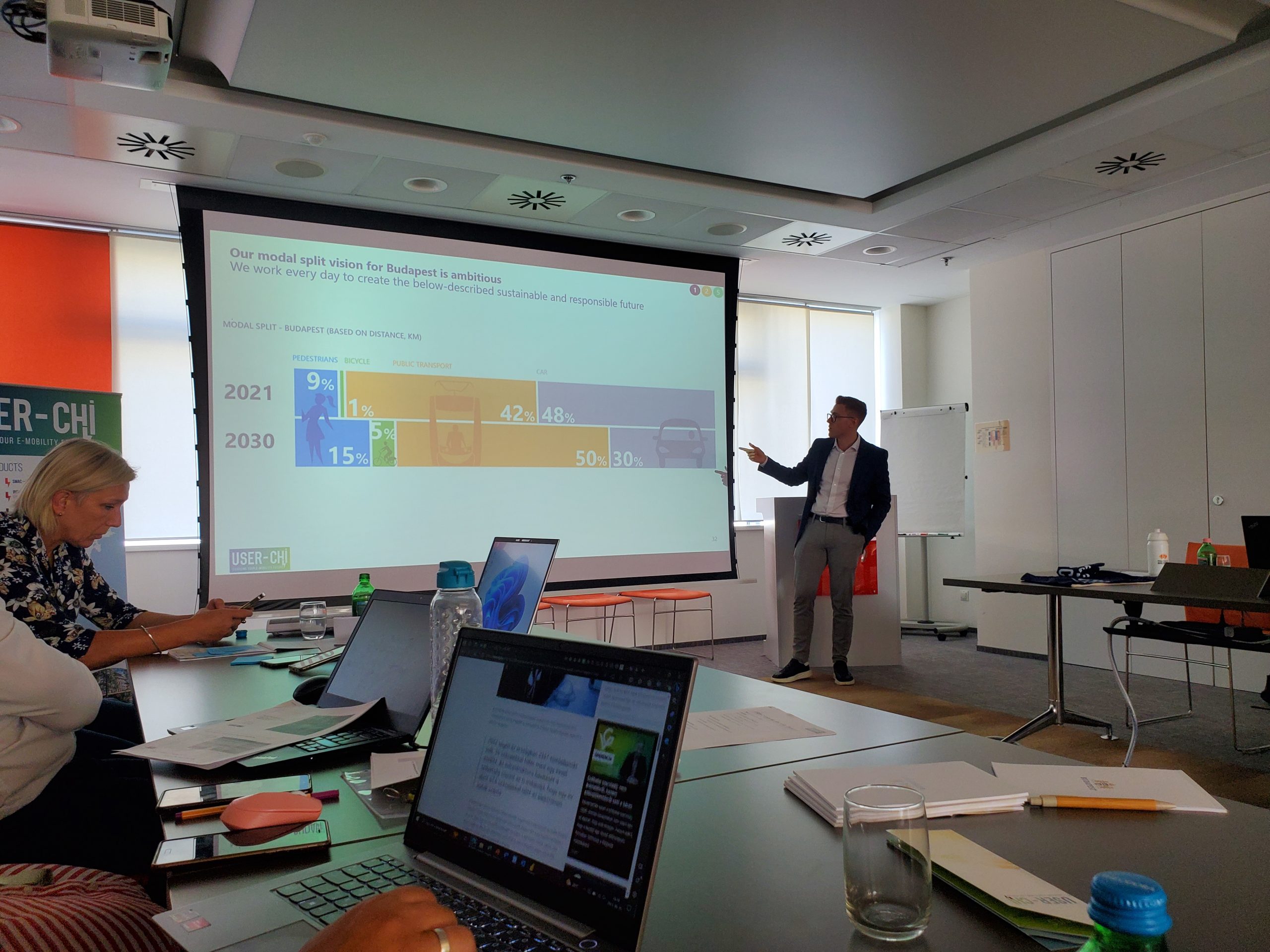
USER-CHI sites in Budapest
In the second half of the peer-learning visit, participants had the chance to see USER-CHI products coming to life in Budapest. The site tour took us to the newly redeveloped area of Etele Plaza, a site of one of Budapest’s future Mobility Stations. The area, once surrounded by vineyards, urbanized in the 1920s with tram connections to the city. The recent opening of a metro station in 2014 transformed the site into a shopping mall and a transportation hub. On this site, USER-CHI local partners will demonstrate INCAR in collaboration with a car-sharing company. During the USER-CHI project’s duration, charging is offered for free to incentivize usage and gather data for future pricing and regulatory decisions.
The second visited site in Budapest was Oktogon. In this central and busy location, USER-CHI chargers equipped with INCAR will be installed to be used by car-sharing companies as well. On this site, the participants were also introduced to the district’s strategy for promoting biking as a safe and reliable mode of transportation through bike incentives schemes, bike breakfasts and cycling trainings.
These two demo sites serve as a microcosm of Budapest’s efforts to optimize urban mobility and engage its citizens in shaping the city’s future.

